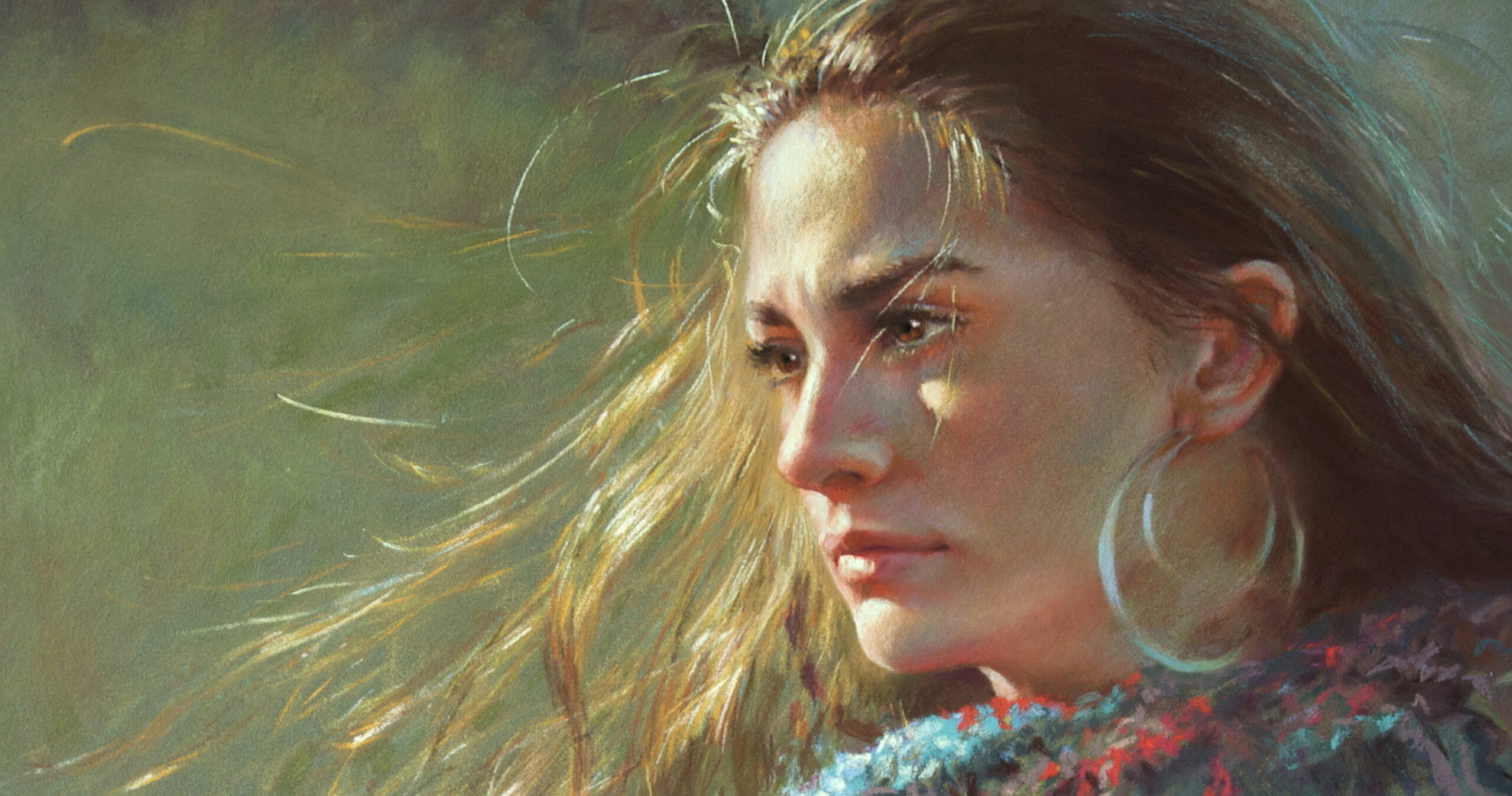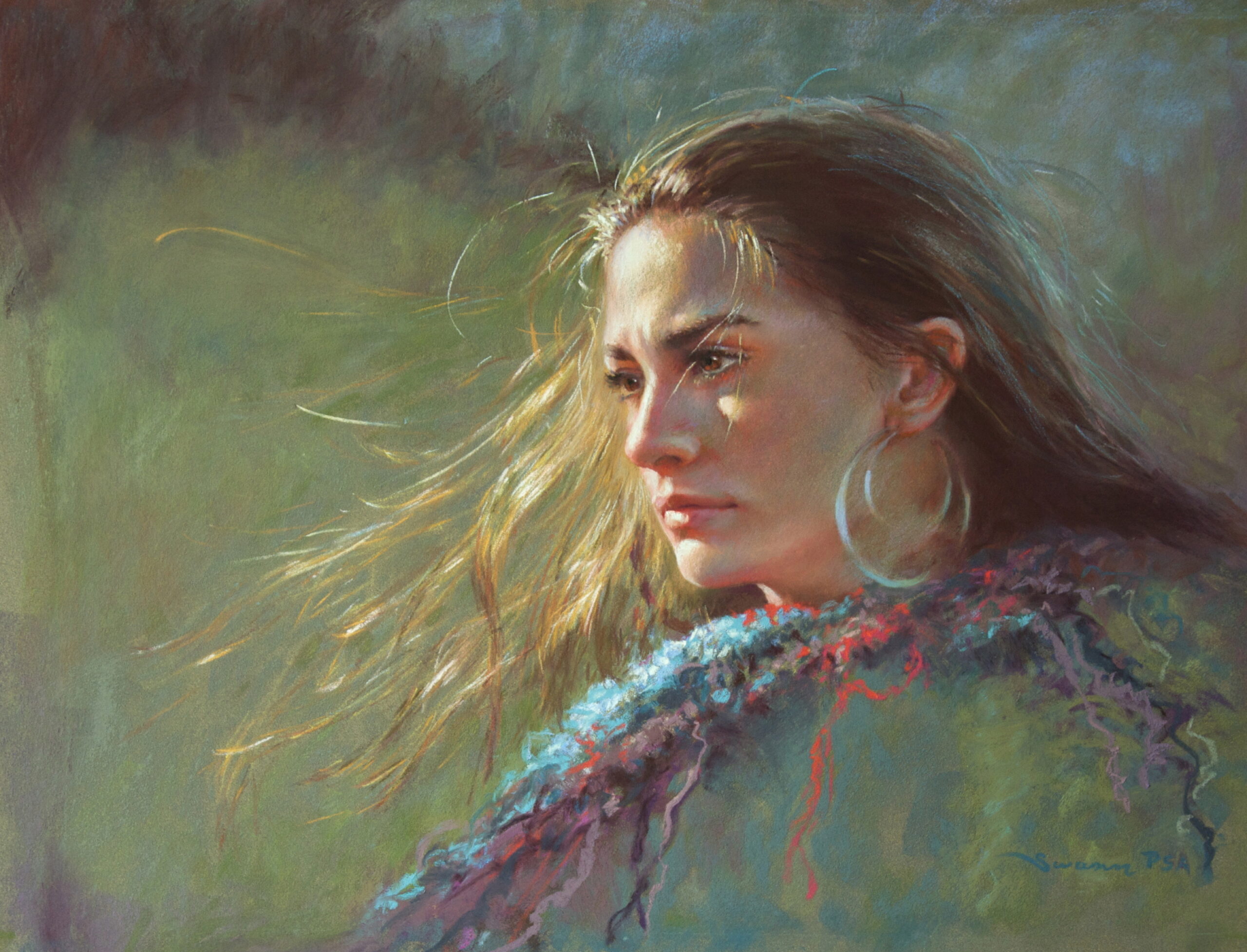
This is the only time I believe in love at first sight….
I don’t exactly remember when I first started using Sennelier LaCarte, but it has to be over 20 years ago. And it changed the way I was working at the time. The ability to layer and layer….and layer again is amazing. So for me this surface gives complete flexibility.
Unlike the Ampersand board from last week, this surface is not already on masonite, but rather on what feels like posterboard. Sennelier refers to it as a “card”. It is rather flexible and the surface is what is referred to as a “gritted” surface. It has to be taped or mounted to a stiff board in order to work on it. I like to have a few sheets of other papers underneath it and then taped to masonite before putting it on my easel.
I love this surface for vignetted pieces. I just have to be very careful to keep the background very clean and not mar the surface in any way. If that happens then I know I have to paint over that area so I try not to touch the surface or drag anything across it or it will leave a mark. Think of it as precious and fragile and a Mahl stick is a good friend. When you run your hand over this surface you will notice the the tiny, sand-like grit can come off. I have often wondered if over time the grit will completely let loose and my paintings will fall into dust, but so far that hasn’t happened. Do not use any kind of eraser on this surface.
Sennelier comes in many colors, but my favorite is the Sienna brown. A nice mid-tone, it is warm and lovely for a portrait. I can go up in value and down in value easily from the middle. Greens pop on it and yellow ochre (always the friend of any portrait) look very fresh on it.
The dangerous thing about this surface is that you can NOT get it wet. Moisture will pull off the glue that is used to keep the grit in place. A sneeze could destroy an area!
Many years go I took a painting to be framed that was on this surface. I was so happy and proud of it. I went back a few weeks later to see the painting in the frame and burst into tears. The gallery had decided they needed to spray the surface without calling or consulting me. They used a “pump” spray fixative- not an aerosol- which is really wet and not meant for this surface. The splatters all over the portrait created tiny dark and white spots. The worst part was that the gallery knew they did something wrong and still put it under the glass and tried to pass it off to me hoping I would not notice. Wrong. I now had to do major reconstruction or start over. I made them pay me for the painting that they destroyed. That is why they have insurance after all. They tried to justify it by saying they were “helping me” but they never apologized. The arrogance of it kept me from working with them again.
That being said, small dots can be repaired. I have had to do it on a portrait. (of course right on the cheek) Make sure to have a bag of grit on hand. You can order it from any art supply place. Pastel grit is very fine. It is only a few bucks and worth keeping around if needed. Lay the painting flat. I spray my finger and gently lay it over the area to be repaired. This gently puts the “glue” in place. Then gently sprinkle the grit into the area. Let it dry completely. Do not spray the area to be fixed or it can cause more damage. Then paint back into the area. There is no way to not have some of the adhesive from my finger hit outside the damaged area, so fix the entire spot, but it does work.
This surface is also not cheap. But if you have never tried it, trust me, it will capture your heart.

“Strands” pastel 20 x 26″
The only truly bad thing about this surface is that is doesn’t come any bigger than about 28” so most of my larger commission work needs to be on something else. But nothing beats the soft quality the pastel has- especially in the upper layers on this surface.
Next week, UArt.

Thank you for the comments on La/carte. I love it for nearly everything pastel. I mostly use it for landscapes.
I adore LaCarte! First started using the smaller pads and have graduated to large sheets. It is an amazing surface to work on. Sand and brown are my face tones and just started using dark green for landscapes. Thanks for tips on repair. My love affair with LaCarte continues and I’m glad to know you love it, too!
Using LaCarte will break you of the habit of gently blowing on your art while working on it!! No spit allowed!
Oh yes … dealing with galleries can be so much fun! Christine, you provide valuable advice in this post.
Two advantages to preparing one’s own pastel “primer” is that a damaged area can be repaired (or an area that just didn’t work). The other advantage is in doing large pastels. I had a commission for a 4’x8′ piece and did it on a sheet of masonite.
Has become my favorite surface
These discussions of surfaces are really helpful — thank you! When you say to “spray your finger” to repair a spot with added grit, what do you spray it with?
Ah. Any workable spray fixative will do.
Thank you!
I love it that you share as you do…..by the way, your offspring could not be better looking. You can watch your son and know how truly sweet he is!
😀❤️
Thank you as always for energetic ever constant inspiration and support.
You r a happy breath of fresh air
Thank you!!
😀😀
I love this paper. I fix “holes” caused by moisture by first poking a hole in a sheet of computer paper a little bigger than the damaged spot, The paper is a mask for the area around the damaged s pot. Spray fixative (I use Krylon or Dick Blick’s store brand) heavily onto the damaged spot in the LaCarte surface then, while still wet, rub soft pastel into the wet fixative. The fixative acts as glue for the pastel. Once dry you can then paint over the pastel “patch” just as you would apply another layer of pastel.
I have also found that you can do a “wet” underpainting with mineral spirits. This is a petroleum product and the LaCarte paper’s adhesive is water based. Do not try this with alcohol or any other water based liquid.
Thanks!!!
Love your blogs and valuable information.